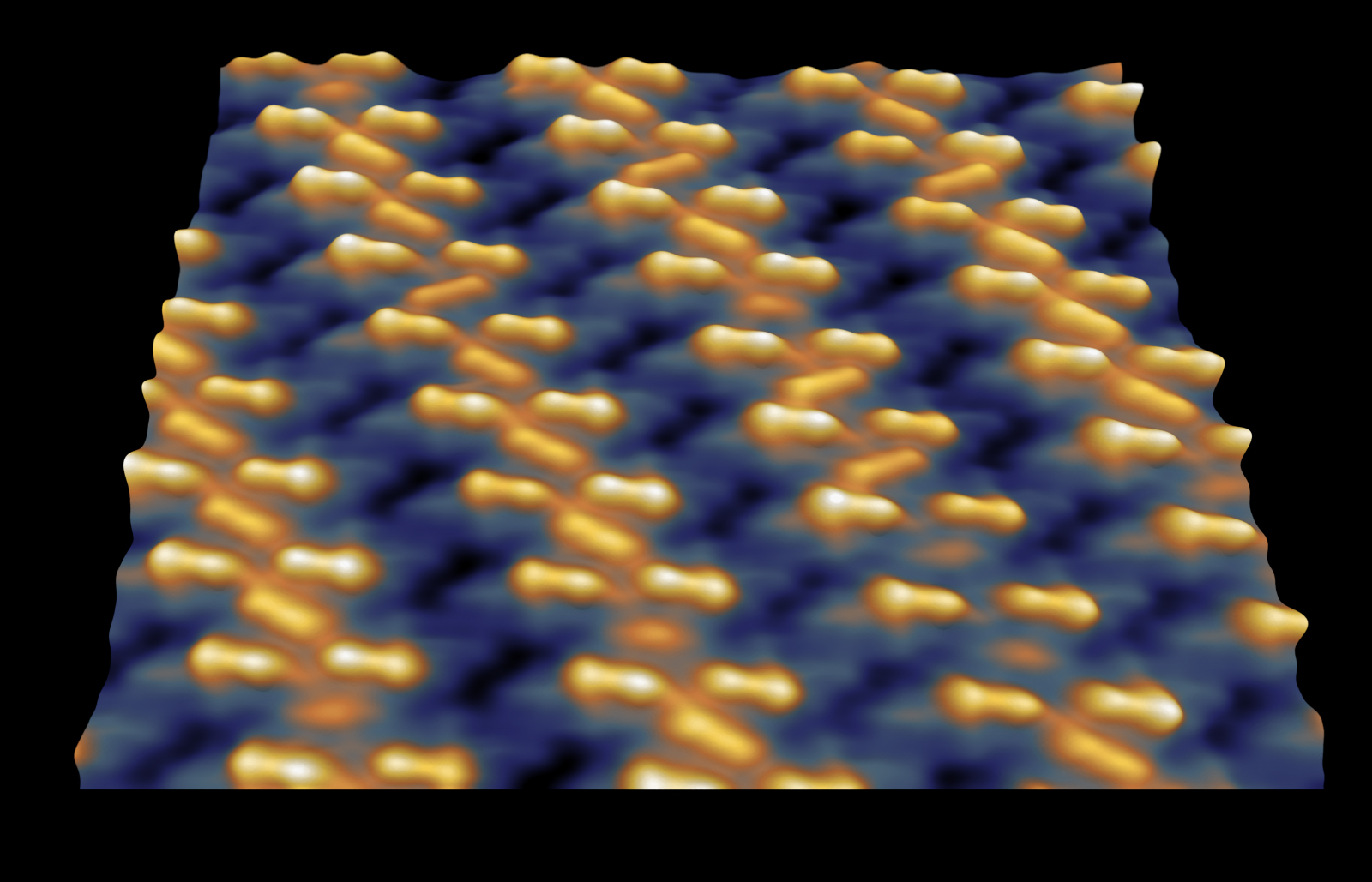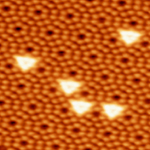
Molecular Functionalization of Surfaces
With collaborators in Chemistry, we are studying how N-heterocyclic carbenes (NHCs), attach to and self-assemble on metal surfaces. These studies are performed with both scanning tunneling microscopy and non-contact atomic force microscopy at temperatures down to 5 K. The NHCs form a strong covalent bond with Au (ad)atoms and they can be chemically derivatized to fine-tune the properties of the surface. These experimental studies are complemented by ab initio theoretical studies performed by R H Miwa's group in Brazil.

Nanophotonics
In the nanocavity created by the tip-sample junction in a scanning tunneling microscope, localized plasmon resonances produce exceptional enhancement of optical processes such as photoluminescence and Raman scattering. We are using the enhancement of the optical signal to perform optical spectroscopy and atomic-resolution microscopy of single molecules and nanostructures.

Physics Education Research
The standard model for Physics undergraduate laboratory instruction requires students to verify results using detailed procedures that are provided by the instructor. This approach does not allow students to develop experimental design skills. As part of a TRESTLE-funded laboratory intervention, we have both modified existing and designed new apparatus to allow a number of experimental strategies to be pursued and investigated the effect of allowing students to practice experimental design and modelling. The AAPT has identified these are 21st Century competences for students in STEM.
 The Physics Department
The Physics Department